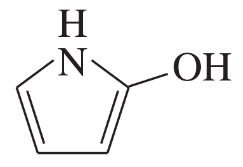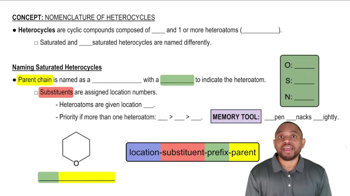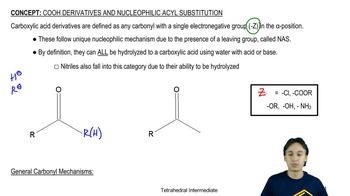For each heterocyclic compound,
(i) explain what type of acid derivative is present.
(a)
(b)
(c)

 Verified step by step guidance
Verified step by step guidance Verified video answer for a similar problem:
Verified video answer for a similar problem:



 3:50m
3:50mMaster Intro to Carboxylic Acid Derivatives with a bite sized video explanation from Johnny
Start learning